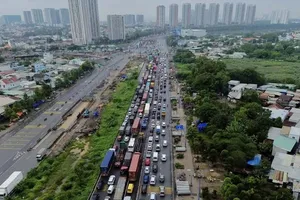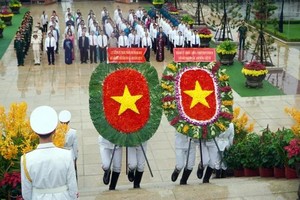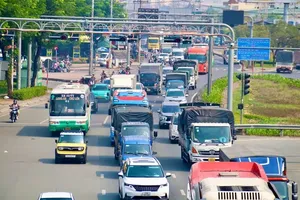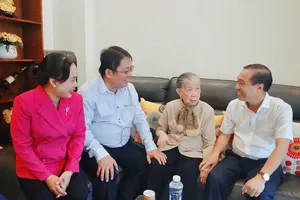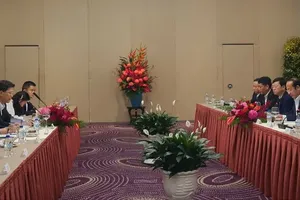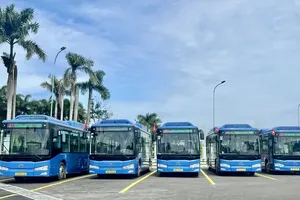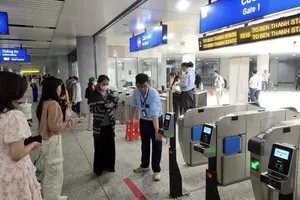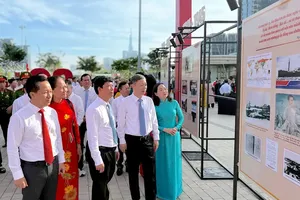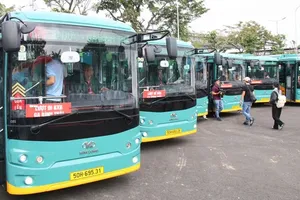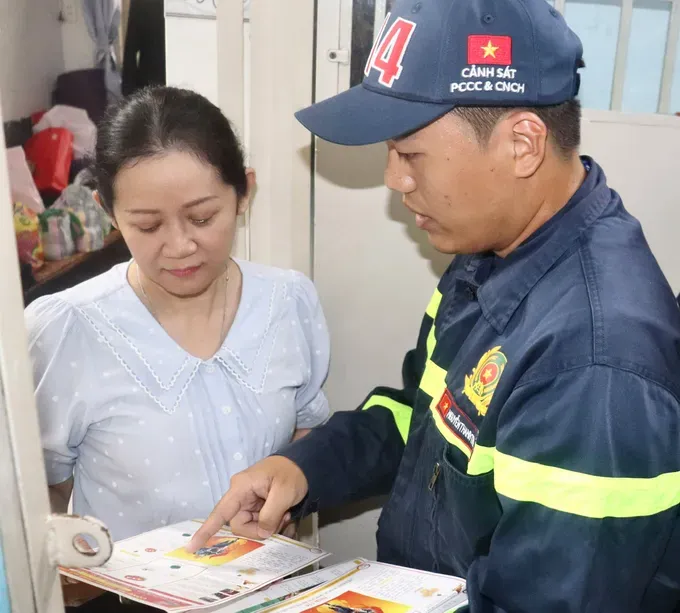
Dismantling enclosed "balcony cages", forging escape routes
In the morning of July 9, the early sun filtered through rusted iron bars at Doc Lap apartment building in HCMC’s Phu Tho Hoa Ward. The sharp clang of metal cutters echoed down a corridor once choked with makeshift extensions. No one spoke the words, but the understanding was universal. What were once seen as “safety balcony cages” for countless families have now, in the shadow of a potential inferno, become “death traps”.
Just a few steps from the charred remains of two apartments completely destroyed in a fire on the night of July 6 stood Huynh Thi Kim Xuyen’s family. They watched intently, their heavy-hearted expressions clear as sparks flew from the cutting tool. Nearby, Tran Thi Kim Trong stood on her porch, her gaze fixed on the crew dismantling her neighbor’s “balcony cage”.
“Back in the day, many of us built ‘balcony cages’ to prevent theft, but we can’t keep them anymore”, Trong said. “Human life is what matters most.” Though her own home was untouched by the blaze, she confessed that the images of ambulance stretchers and the haunting cries from that night still disturb her sleep.
Faced with this alarming reality, all 33 regional teams from the HCMC Fire Prevention, Fighting, and Rescue Police Division have been on alert. In recent days, they have coordinated with the governments of 168 wards and communes to launch a massive awareness campaign, urging residents of old apartment buildings to dismantle their “balcony cages” and establish a second escape route.
Since the beginning of the year, HCMC authorities have organized 270 training sessions for 79,571 participants. The HCMC Police also conducted 1,488 inspections, leading to 1,408 violation reports and administrative fines totaling over VND500 million (approx. US$20,000).
Cracking down on unsafe apartment buildings
Recently, the HCMC People’s Committee issued a directive for all relevant departments and local governments to ramp up inspections and rectify management practices in apartment buildings, with a laser focus on fire safety.
The directive tasks local authorities with coordinating with the Fire Police to strictly penalize violations in unsafe buildings. They are also to spearhead campaigns encouraging residents and management boards to remove illegal building structures and clear obstructed escape routes that tarnish the city’s image and compromise fire safety. All units are required to report their results to the Department of Construction by August 10.
In Binh Quoi Ward, nine task forces are providing hands-on, door-to-door guidance on fire safety. Vice Chairman Mai Quang of the Binh Quoi Ward People’s Committee is leading the effort to persuade some 1,000 households to remove hazardous “balcony cages”, aiming for 100 percent compliance to ensure family safety.
The personal approach is proving effective. Spurred by recent fires, resident Le Thuy Linh said she “dismantled ours right away”. At another building in Cau Ong Lanh Ward, a resident confirmed the campaign has created a clearer understanding of fire risks and the critical need for viable escape routes, signaling a tangible shift in public mindset.
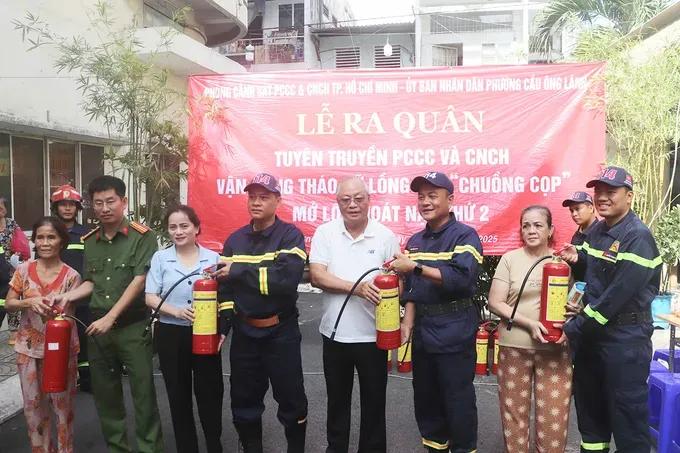
Safety begins with smallest actions
Balconies sealed off by iron cages, corridor corners turned into makeshift storage closets, electrical wires tangled like cobwebs – these are familiar and dangerous sights in hundreds of older apartment buildings across HCMC.
Statistics reveal that HCMC is home to 1,132 apartment buildings. Among these, 239 buildings and 341 blocks were constructed before 1975, with hundreds more built between 1975 and 2001. Many of these structures are ticking time bombs, rife with fire hazards.
According to Deputy Director Nguyen Thanh Huong of the HCMC Public Security Department, a major hurdle in managing these old buildings is the lack of funds for maintenance and renovation.
“The original investors or current management boards often don’t have a maintenance fund or a steady source of income to repair and upgrade the buildings”, he explained. “Many residents are low-income laborers, making it incredibly difficult to raise the necessary contributions for repairs.”
The most critical issue, the Deputy Director added, is the rampant use of illegal extensions and enclosures. Many residents expand their living spaces on their own, which not only increases fire risk but also severely hampers firefighting and rescue operations. While HCMC leadership has consistently directed focus toward fire safety propaganda, the problem persists.
The HCMC Public Security Department advises that a fundamental understanding of fire causes is crucial. Residents must be conscious of managing heat sources, flames, and flammable materials in their daily routines.
They stress that illegal enclosures are a grave danger, blocking escapes and accelerating the spread of fire. Every home and workplace should be equipped with basic firefighting tools and have a clear escape plan. Special attention should also be paid to often-overlooked flammable materials like cobwebs, accumulated dust, and even decorative wall art.
Despite HCMC’s significant investment in modern firefighting equipment and highly trained personnel, these official efforts are rendered meaningless if residents remain indifferent to their own safety. Ignoring hazards like overloaded wiring or blocked escape routes means that when disaster strikes, it will be too little, too late.
The solution lies in making fire prevention a daily habit. As one police officer explained while visiting homes, safety is not someone else’s job or a short-term campaign, but a personal culture built on simple, persistent actions. Simply turning off electronics or double-checking the stove are small daily acts that can prevent catastrophe and ensure every home remains a safe and peaceful place for all.
Former Vice President To Thi Bich Chau of the HCMC Branch of Vietnam Fatherland Front reckoned that it is necessary to perform several key solutions for a comprehensive fire safety strategy.
First, authorities must classify and publicly release a transparent list of high-risk buildings. The removal of dangerous “balcony cages” must be handled carefully, prioritizing human life and structural integrity while giving residents adequate time to comply.
To foster a culture of personal responsibility, public awareness campaigns must be intensified. Finally, for future prevention, supervision must be strengthened to ensure all new construction and renovations embed fire safety compliance from the initial design stage. This proactive, multi-pronged approach is essential to minimizing tragedies in the community.
